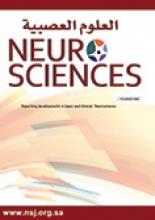Abstract
Dravet syndrome (DS) is one of the most severe genetic epilepsies of childhood. Charlotte Dravet described severe myoclonic epilepsy in infancy in 1978. Shortly after the initial report, many cases were published. Most of the cases have the SCN1A mutation. A variant of DS called borderline severe myoclonic epilepsy in infancy has similar clinical and electrographic features without myoclonus. The prevalence of DS is 3-6% of epilepsy cases in infancy, and the incidence is less than one per 40,000 infants. Also, there is a rare mutation in the GABARG2 and SCN1B genes. Usually, affected patients have normal developmental milestones during infancy. Then after 1-4 years of age, they start to develop refractory mixed seizure types (tonic seizures are exceptional) and psychomotor retardation, ataxia, and hyperkinesias. The EEG reveals focal or multifocal epileptic discharges and it commonly shows photosensitivity. The treatment of the seizures is challenging. The combination of stiripentol, valproic acid, clobazam, and topiramate is promising.
- Copyright: © Neurosciences
Neurosciences is an Open Access journal and articles published are distributed under the terms of the Creative Commons Attribution-NonCommercial License (CC BY-NC). Readers may copy, distribute, and display the work for non-commercial purposes with the proper citation of the original work.






